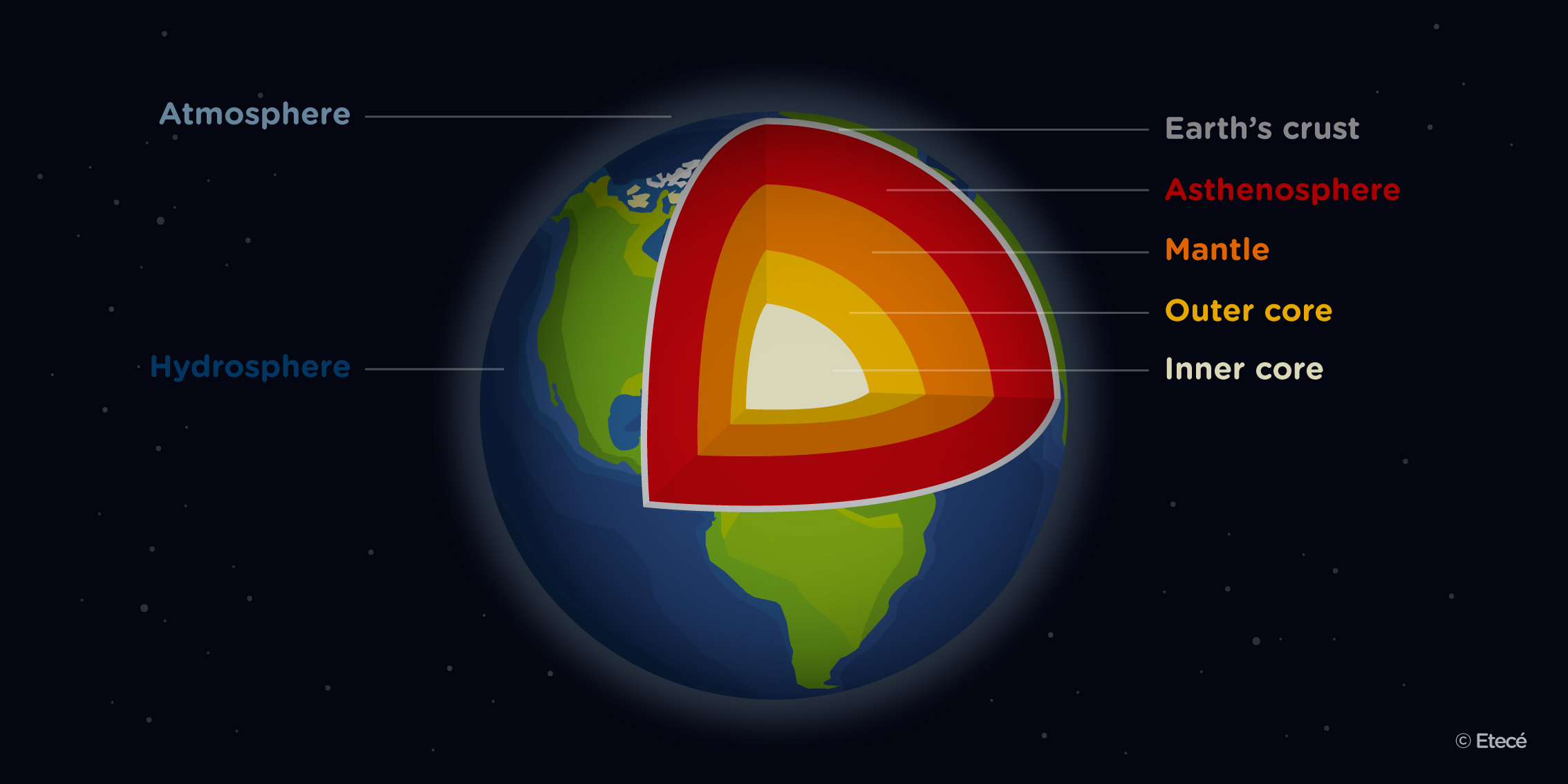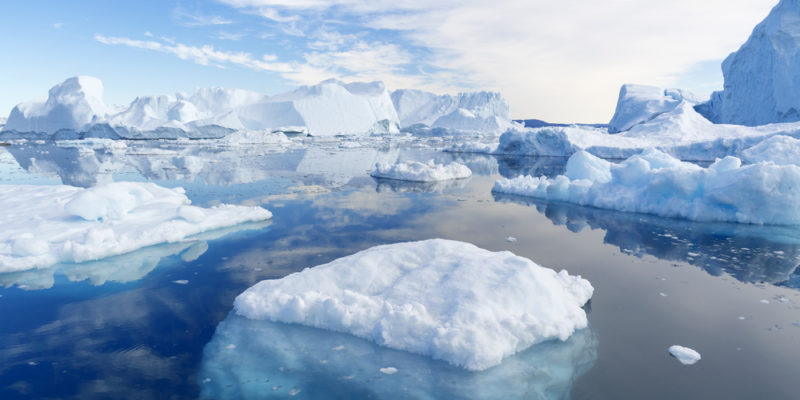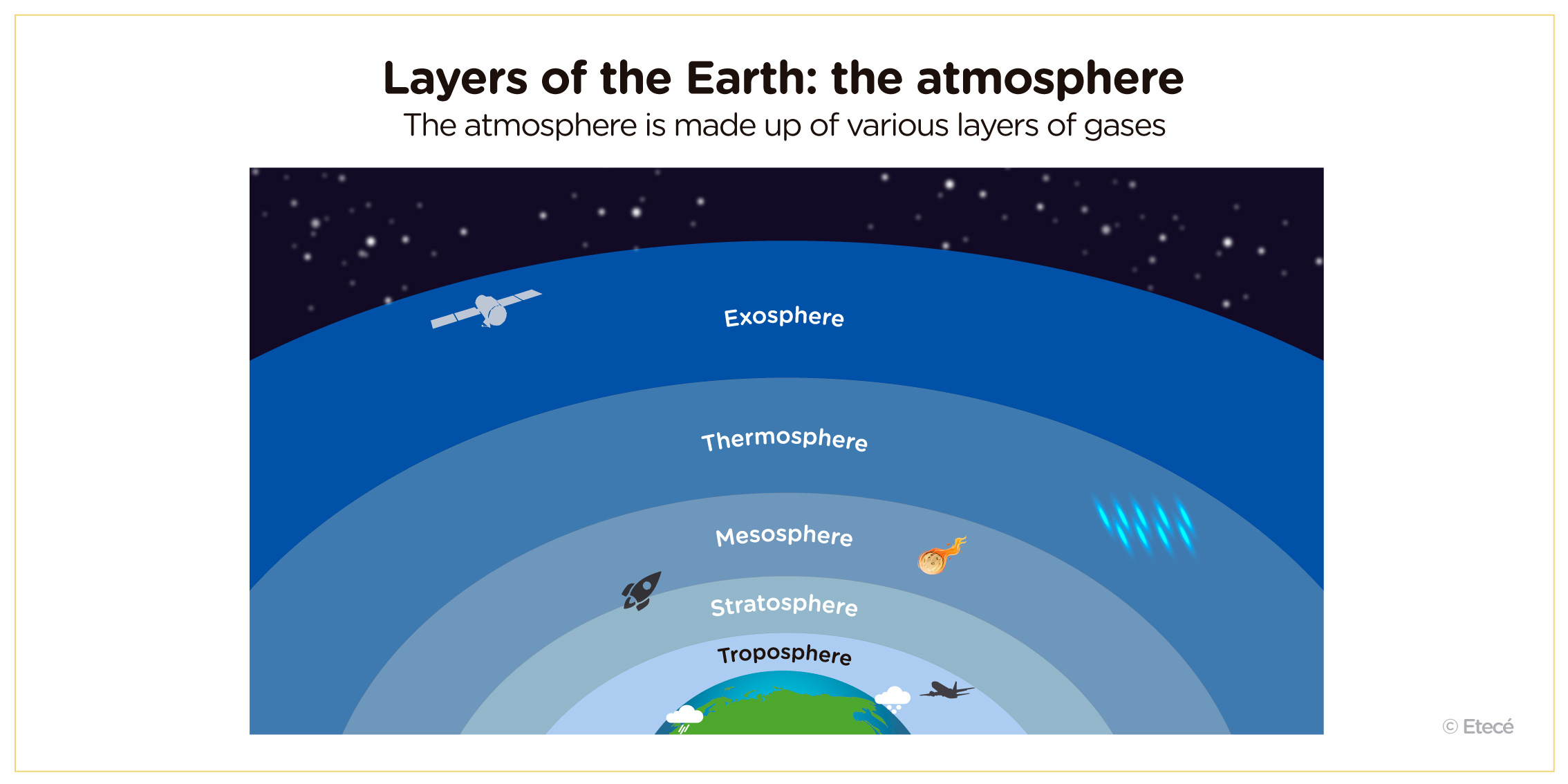We explore the layers of the Earth, and discuss their characteristics, components, and main functions.

The layers of the Earth are envelopes extending from the core, at the center of the planet, to the exosphere, the outermost layer of the atmosphere.
There are three broad groups of layers depending on their composition type: the geosphere, the hydrosphere, and the atmosphere. The geosphere is the group of layers that make up the interior of the Earth and which sustains the other two: the hydrosphere and the atmosphere.
Geology is the science that studies the composition and structure of the layers of the Earth's interior to understand the evolution of the planet. Meteorology and climatology are mainly concerned with the atmosphere, while hydrology and oceanography are dedicated to the study of the hydrosphere.
- Ver además: Continents
Characteristics of the layers of the Earth
The major features of the layers of the Earth are:
- They are divided into geosphere, hydrosphere, and atmosphere.
- The layers of the geosphere are: inner core, outer core, mantle, and crust.
- The layers of the atmosphere are troposphere, stratosphere, mesosphere, ionosphere, and exosphere.
- The liquid water that makes up the hydrosphere is found in rivers, lakes, ponds, oceans, and underground.
- The solid water that composes the hydrosphere is found in polar ice caps and glaciers.
- The gaseous water that constitutes the hydrosphere is found in the form of water vapor in the atmosphere.
Geosphere

The geosphere is made up of four layers that extend from the core to Earth's surface. These are:
- Inner core. The deepest layer of the Earth, it consists of a large iron ball with a radius of 756 miles (1,216 km). It is composed primarily of iron and nickel, and is at an extremely high temperature of about 9,900 °F (5,505 ºC), nearly as high as the Sun’s surface temperature.
- Outer core. This layer is made up of liquid iron and nickel, and is about 1,410 miles (2,270 km) thick. The movement of these elements generates a magnetic field around the planet.
- Mantle. This layer covers the outer core and is the thickest, accounting for 84% of Earth's volume. It is of a semi-plastic nature (a state between solid and fluid), and is composed mostly of metals like iron and minerals such as magnesium. The upper part of the mantle is called the asthenosphere, where magma movements occur leading to tectonic shift.
- Crust. It is the thin, outermost layer that envelops the Earth, where the biosphere develops. It accounts for 1% of the planet's volume, and is composed of relatively light mass elements such as aluminum, silicon, calcium, and oxygen. It is divided into two types: continental and oceanic crust. Its average thickness is 62 miles (100 km), though it can reach over 155 miles (250 km) thick in the older parts of continents.
Inge Lehmann was a Danish seismologist born in 1888, who obtained two master's degrees, one in mathematics and the other in geodesy. She was a pioneer in the incorporation of women into natural science and mathematics. Her studies contributed to the understanding of the planet's interior and the discovery of the Earth's inner core, for which gained wide recognition from the international scientific community. She died in 1993 at the age of 105.
- See also: Tectonic plates
Hydrosphere

The hydrosphere is Earth's layer of water, which can be found in solid, gaseous, or liquid form.
Solid water is found in the coldest regions of the planet, such as Antarctica and high mountainous areas. It is abundant in glaciers and continental ice, and at the North Pole it occurs in the form of polar ice caps.
Gaseous water is water vapor in the atmosphere, and is one of the main constituents of the hydrosphere. Water vapor is key to understanding the planet's climate dynamics, since it affects cloud formation, precipitation, and other meteorological phenomena.
Liquid water is found in rivers, lakes, and inland water bodies. It also occurs underground as groundwater, and in seas and oceans as saltwater. Inland freshwater is vital for supplying the population and irrigating crops.
Atmosphere

The atmosphere is composed of various layers of gases. It primarily consists of oxygen, nitrogen, and water vapor, and to a lesser extent, ozone, carbon dioxide, and methane.
The layers of the atmosphere are:
- Troposphere. This is the layer in contact with Earth's surface and where climatic and meteorological processes occur. It is composed mainly of nitrogen, oxygen, and water vapor, and is approximately 6 miles (10 km) thick. As altitude increases, temperature, pressure, and air density decrease.
- Stratosphere. It is composed of inorganic elements such as nitric oxide, nitric acid, sulfuric acid, ozone, and halogens. In the outer part of the stratosphere lies the ozone layer, which is of vital importance since it acts as a filter for the Sun's ultraviolet rays, harmful to human health.
- Mesosphere. This layer protects the planet from meteorite and asteroid impacts, as it is in the mesosphere that these objects disintegrate upon entering from space. Its temperature decreases with altitude, reaching -112 °F (-80 °C).
- Thermosphere or ionosphere. This layer is characterized by the occurrence of ionization processes which result in a high concentration of electrons. It extends up to an altitude of 310 miles (500 km) and is the layer of the atmosphere that enables the transmission of radio waves.
- Exosphere. The least dense layer of all, it is composed of helium and hydrogen. It serves as a transition zone between the Earth's atmosphere and outer space, where there are no gases or gravity. A number of artificial satellites orbit in the exosphere, providing information for telecommunications, weather forecasting, and Earth's surface observations.
Explore next:
References
- Milo, A. (2023). Atmósfera terrestre: así funciona el manto vital que permite la vida en la Tierra tal como la conocemos. National Geographic en Español. https://www.ngenespanol.com/
- Novillo, C. (2022). Qué es la hidrósfera: definición y características. EcologíaVerde. https://www.ecologiaverde.com/
- Tarbuck, E. y Lutgens, F. (2005). Ciencias de la Tierra. Una introducción a la geología física. Prentice Hall.
Was this information useful to you?
Yes NoThank you for visiting us :)